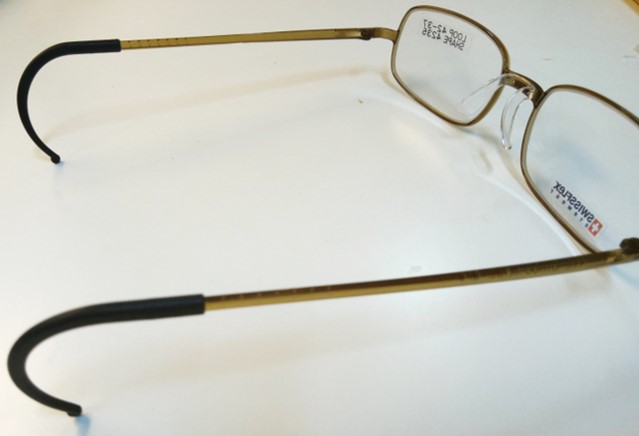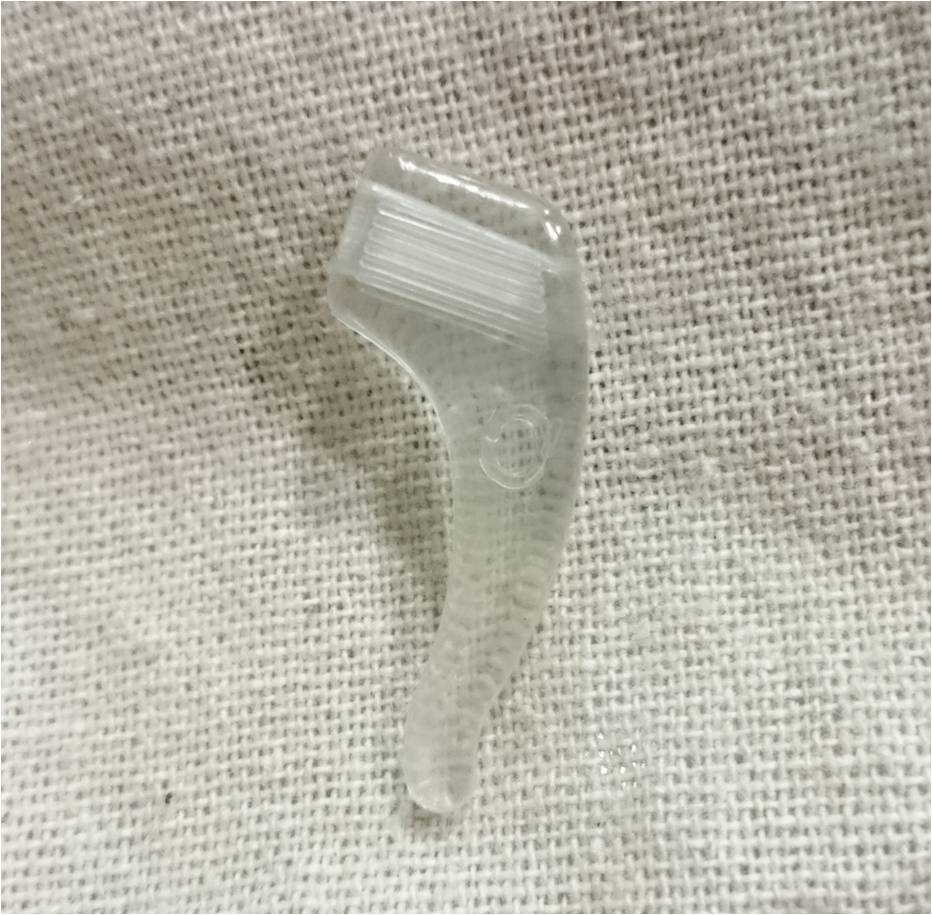Articles | Choosing eyeglasses frame for multifocal lens (Myopilux) treatment
Increasing rate of myopia development in children is a concern as it is likely to develop into high myopia during adulthood which have been associated with serious eye conditions such as early cataract or retina detachment. Currently, there are four scientifically tested treatments for controlling myopia development, orthokeratology ("ortho-k"), multifocal contact lenses, atropine eye drops and multifocal eyeglasses (Myopilux). Atropine eye drops is often used with multifocal eyeglasses as atropine relaxes the eyes' focusing mechanism and this require multifocal or bifocal eyeglasses to allow near focusing reading.

Cable temple glasses with its curved loop at the end of the temple.
In single vision lens, slipping glasses is just a nuisance but with multifocal lens, this will affect vision as the area of the lens for close vision has shifted further down. Unfortunately, most eyeglasses frames in the market are susceptible to slipping as they are not engineered to tolerate movements or lowering of your head. This may reduces the effectiveness of treatment using multifocal eyeglasses such as Myopilux as the user is not looking through the correct area on the lens. It is possible to tighten the frame temples so that it offers a greater grip on your head but this may cause soreness on the side of your head or back of your ears if the gripping force is excessive.
For frames that are designed to stop glasses from slipping, the cable temple with its temple tip curling down to the earlobe offers good mechanical support. However these may squeeze your ears if the fit is not exact. Although the ear is made of soft cartilage, prolong excessive pressure will cause soreness.
Beta-Simplicity Eyewear frames come with a anchor tip design which offers excellent support and comfort. Unlike most frames temple tips, the anchor tip is made of ultra-soft elastomer. The engineered anchor tip comes with a cushioning system to reduce the pressure behind the ears while providing much needed mechanical support. The metal core within the soft covering is very responsive to bending for accurate contouring to fit your head profile. This is unlike most other frame temple which are either full plastic or have a hard plastic temple tip which makes it difficult to bend.
For existing eyeglasses users, another option to secure the glasses is to use temple earhooks. These act as mechanical support by tucking behind your ears. Due to sensitivity of the ear to constant excessive pressure, most earhooks in the market need to be carefully adjusted such that it just touches the back of the ear without applying too much force but still holding the glasses in place without slipping. Such fine adjustment is often difficult to get it right. FOCUS and Flex Discreet earhooks are designed to absorb excessive force such that it is easy to get the glasses to stay in position without hurting the ears. FOCUS uses a forward pointing cushion to reduce the pressure and Flex Discreet has a flexible tail/hook that limits the amount of force applied.

Generic long temple earhook

Flex Discreet temple earhook with flexible tail

FOCUS temple earhook with a cushioned tail
23 February 2018
Updated 08 September 2019
Read also
10 August 2018
14 July 2018
27 January 2018
